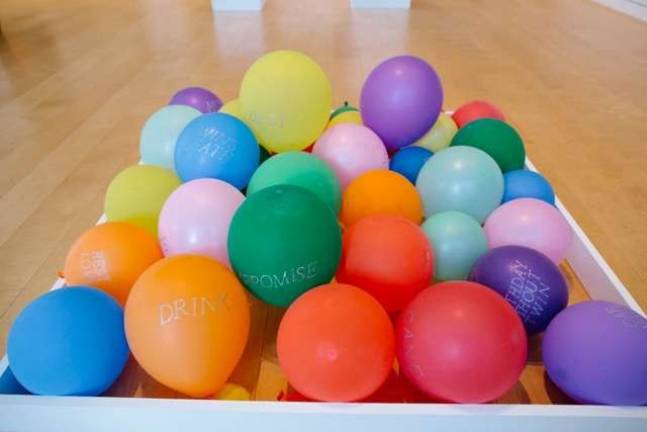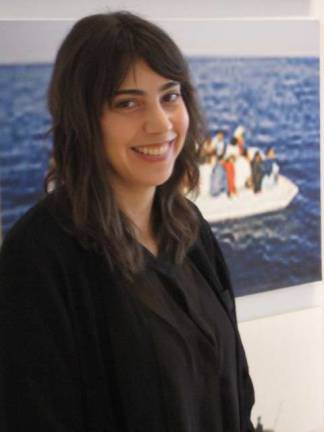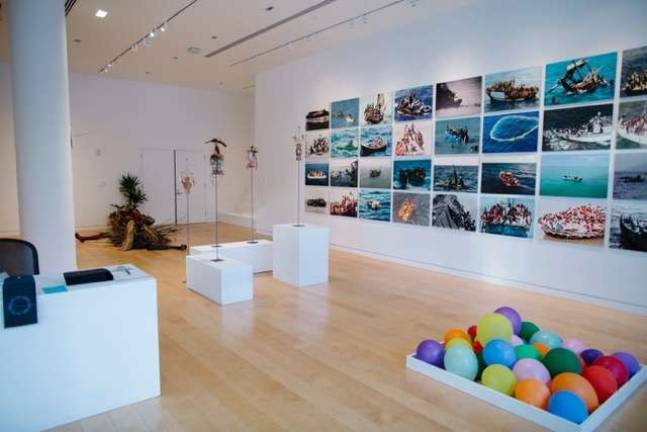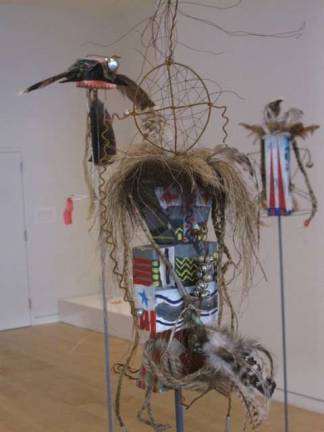Is there an upside to death?
Arden Sherman wants to start a conversation about a subject most people would rather avoid. “There's a power and beauty that comes from acknowledging that there's an end to life,” she said.
And as curator and director of Hunter College's East Harlem Gallery, Sherman wants to talk about a lot more.
The space — on the ground floor of Hunter College's Silberman School of Social Work, at East 119th Street and Third Avenue — has been in existence since 2011 but has undergone a renaissance of sorts since Sherman, 32, came to the post a year ago.
The gallery's mission is to build on what she said was "the under-established history of socially engaged art projects in New York." As such, the space — within a neighborhood in transition, with upscale boutiques and restaurants bumping up against longtime retail businesses — will host temporary exhibits rather than a collection.
“I want the neighborhood to think about this place as a platform for conversation. I want to build this space beyond any exhibition, so that people know it's available to them and to the art world,” she said.
The gallery, free and open to the public, is a first for the East Harlem community, she said.
The current exhibition spotlights 12 international contemporary artists, each looking at the way death is acknowledged by the living. Sherman's hope is that the installation, titled “If You Leave Me Can I Come Too?”, will provoke, while steering clear of the funereal.
The exhibition's title is taken from a large abstract painting by Friedrich Kunath. The question, coupled to the depiction of a black, closed door, might seem to point to a fear of mortality, according to Sherman. But, she said, the colorful rainbow in the picture allows the spectator to imagine what might lie beyond the door.
The work and the exhibition are “hopeful and life affirming,” she said. Kunath, she said, is hinting that the bond between people remains despite an end that's assured.
“People can talk about this subject,” she said. “It shouldn't be taboo.”
Artist Justine Reyes photographed the contents of a dresser drawer sometime after its owner had died. The viewer is reminded about how everyday objects become sanctified and preserve our memories.
The work of Brad Kahlhamer, whose heritage is Native American, recalls a legend within the Hopi and Pueblo Indian tribes about beneficent spirit-beings, kachinas, who brought good luck. At some point, the spirit-beings evolved into carved, colorful dolls that could be given to tribal children. Kahlhamer's installation reveals these joyful objects, which seem to link the spirit world to the land of the living.
One wall of the small space is covered with Xaviera Simmons' large-scale grid of 32 photographs of people on boats. The groups, backgrounded by turquoise waters, could be those out on an excursion. But these are migrants who have risked everything to escape death. They are reaching for life in precarious vessels. The photos From Cuba, Javier Castro's video, “Ossuaries,” documents the exhumation of remains from overcrowded graveyards and the conveyance of bones, now pressed together in small boxes, to their final resting places. Castro's video chronicles the cemetery workers going about their repetitive tasks, underlining the routine nature of death.
The exhibition is dedicated to Jean Seestadt, one of the featured exhibitors. During a phone interview, Seestadt acknowledged that she is obsessed with her own mortality. “I was hoping for clarity,” she said about research she did for the exhibit at the Carter Burden Center for the Aging in East Harlem.
Seestadt said the women she met at the Center “led fuller lives” than she did. “These women are amazing,” she said. “They are active, they continue to learn. They are inspirational.”
Most of all, the women at the center are not afraid of dying, Seestadt said. For her part, she “cannot accept that there'll be an end.” The artist's vibrant installation of balloons – which will deflate over time – is celebratory.
The balloons, inscribed with single words and short phrases, are meant to make people think of a life well lived. “The artist has a vision, but the viewer may have different ideas,” she said.
On one of the gallery walls is a copy of a letter Seestadt wrote to her husband, sharing her fears with him: “There are so many wonderful memories that I don't want to die with me,” she wrote. “The love I feel for you and my family is sacred and it is going to end. … So this is what we have. Just us and we are going to end.”
Seestadt doesn't look at her art as therapy, yet she said that talking about her fear of death has made her more comfortable with herself. “I don't seem to have the panic attacks anymore,” she said. “I'm more comfortable with my anxiety.”



